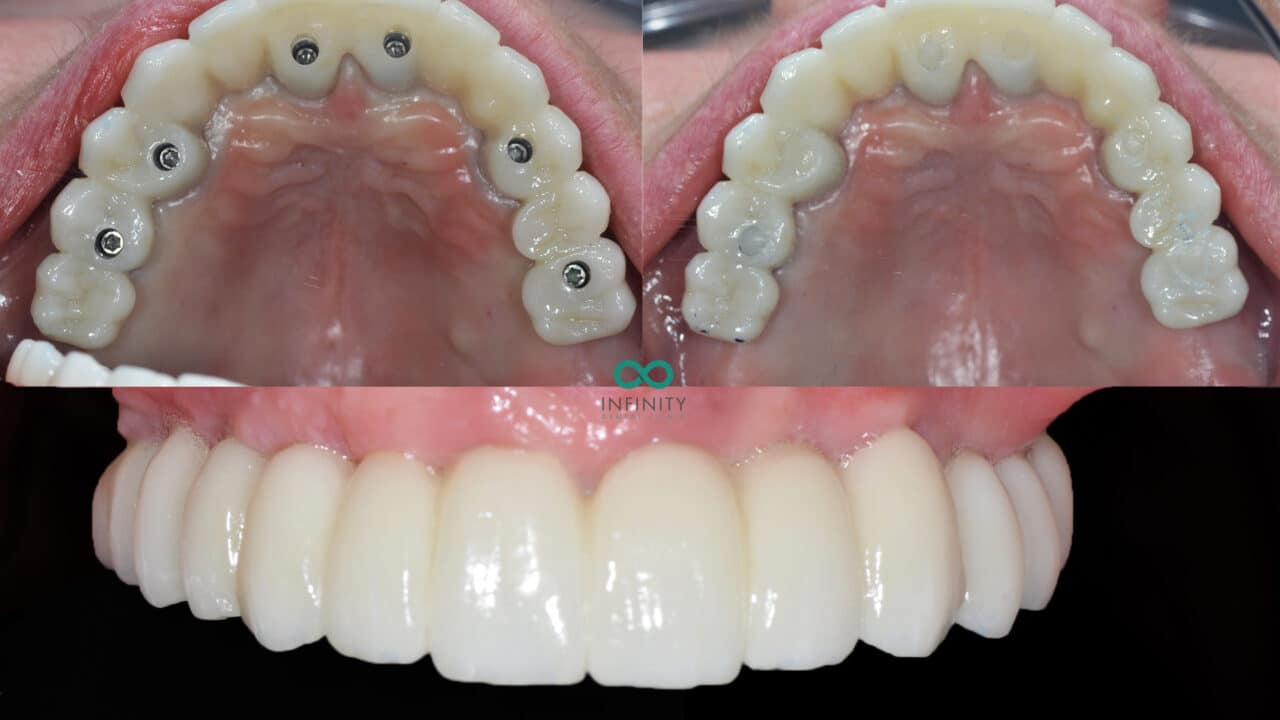The Definitive Guide to Dental Sense
The Definitive Guide to Dental Sense
Blog Article
The Buzz on Dental Sense
Table of ContentsOur Dental Sense IdeasThe Of Dental SenseExcitement About Dental SenseGetting The Dental Sense To Work
are medical tools surgically implanted right into the jaw to bring back an individual's capability to eat or their look. They provide support for synthetic (fake) teeth, such as crowns, bridges, or dentures. When a tooth is shed due to injury or illness, an individual can experience problems such as fast bone loss, faulty speech, or adjustments to chewing patterns that lead to pain.Oral implant systems include a dental implant body and oral implant abutment and may additionally include a joint addiction screw. Root canal procedure. The oral implant body is surgically inserted in the jawbone instead of the tooth's root. The dental implant joint is typically connected to the implant body by the joint fixation screw and prolongs with periodontals right into the mouth to sustain the attached fabricated teeth
(https://dentalsense1.mystrikingly.com/blog/transform-your-smile-with-dental-implants-root-canal-procedures-and)Structure of The Oral Implant System selecting dental implants, speak with your oral supplier regarding the potential advantages and dangers, and whether you are a prospect for the procedure. Things to consider: Your total wellness is a vital element in identifying whether you are a good candidate for oral implants, how much time it will require to heal, and the length of time the implant might remain in location.
Smoking may influence the recovery procedure and decrease the long-lasting success of the implant. The healing procedure for the dental implant body may take several months or longer, during which time you normally have a temporary abutment in location of the tooth. the dental implant procedure: Thoroughly follow the dental hygiene guidelines provided to you by your dental provider.
The Definitive Guide to Dental Sense
Implant failure can lead to the demand for one more operation to deal with or replace the dental implant system. Brings back the capability to chew Restores cosmetic look Aids maintain the jawbone from reducing due to bone loss Preserves the health of the surrounding bone and periodontals Helps maintain nearby (neighboring) teeth stable Improves quality of life Damage to bordering natural teeth during implant positioning Injury to the surrounding cells during surgical treatment, such as sinus opening Injury during surgery (for instance, crack of bordering jawbone) Insufficient function, such as really feeling like the teeth do not bite together typically A feeling that the tooth hangs or twisting in position arising from an abutment screw loosening Implant body failure (looseness of the dental implant body) because of systemic infection, which may be most likely in individuals with unchecked diabetes mellitus due to local infection in bone and gums supporting the implant body as a result of delayed recovery, which may be extra likely in individuals who smoke Trouble cleaning up the gum tissues around the dental implant, resulting in bad oral health Unattended gum condition Post-surgical feeling numb because of nerve impingement or damage Constantly notify health care providers and imaging professionals that you have dental implants prior to any magnetic vibration imaging (MRI) or x-ray treatments.
FDA is not knowledgeable about any negative events reported for MRI or x-ray treatments with oral implants. Dental implants systems are generally made from products that follow international agreement criteria of the International Organization for Standardization (ISO) or ASTM International. These standards have information of what makes a secure product.

A dental implant is a structure that changes a missing tooth. With screw-like tools, the surgeon inserts a dental implant into the jawbone, and it works as a support for a man-made tooth, called a crown. A gadget called a joint connects the fabricated tooth to the oral implant. The crown is custom-made to fit the person's mouth and match the shade of their teeth.
The Best Strategy To Use For Dental Sense
Some people are not qualified for dental implant surgery. It is for dental specialists to run on individuals with: acute illnessuncontrollable metabolic diseasebone or soft cells disease or infectionIf these concerns are settled, a person can have the surgery. In, oral doctors abstain from operating on people with: If people with any of the above undergo oral implant surgery, there is a greater danger of the implant falling short.

Dental implant surgical procedure is a customized process. Offer you time to heal. Connect the blog post and last crown, bridge or denture.
Next, your cosmetic surgeon will very carefully put the dental implant right into your jaw. If your implant is near the front of your mouth, your dental practitioner will certainly make a temporary tooth for you to put on my response up until you heal.
Not known Facts About Dental Sense
Your copyright can inform you what to expect in your scenario. Throughout the recovery phase, your jawbone should fuse to the dental implant. This procedure, called osseointegration, is essential for security and long-term success. This process can take anywhere from three to 9 months. In some cases, it might take much longer.
When your dental implant heals, your dental practitioner can affix the joint (little port post) and your final repair (crown, bridge or denture). This normally takes concerning one hour to finish and may require a second small surgical procedure. You should not feel any pain during your dental implant procedure due to the fact that your company will certainly use medicine to numb your periodontals.
Report this page